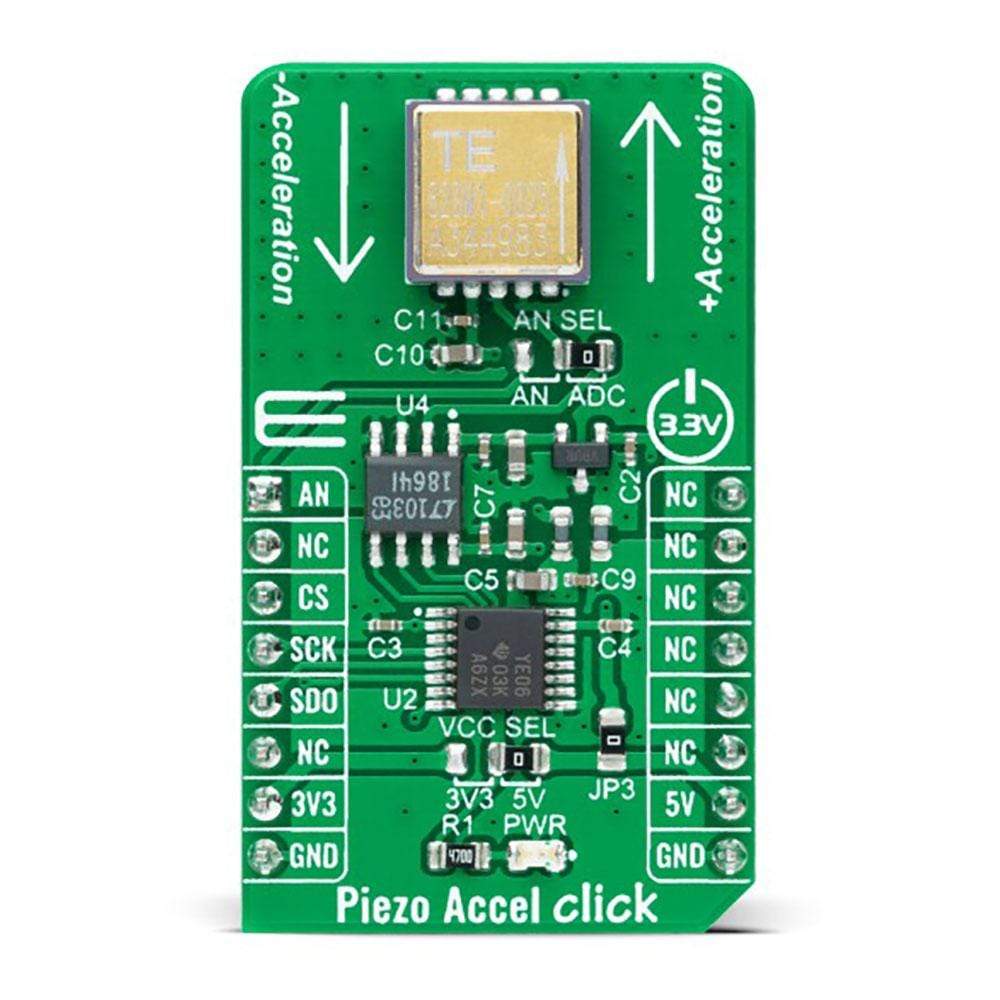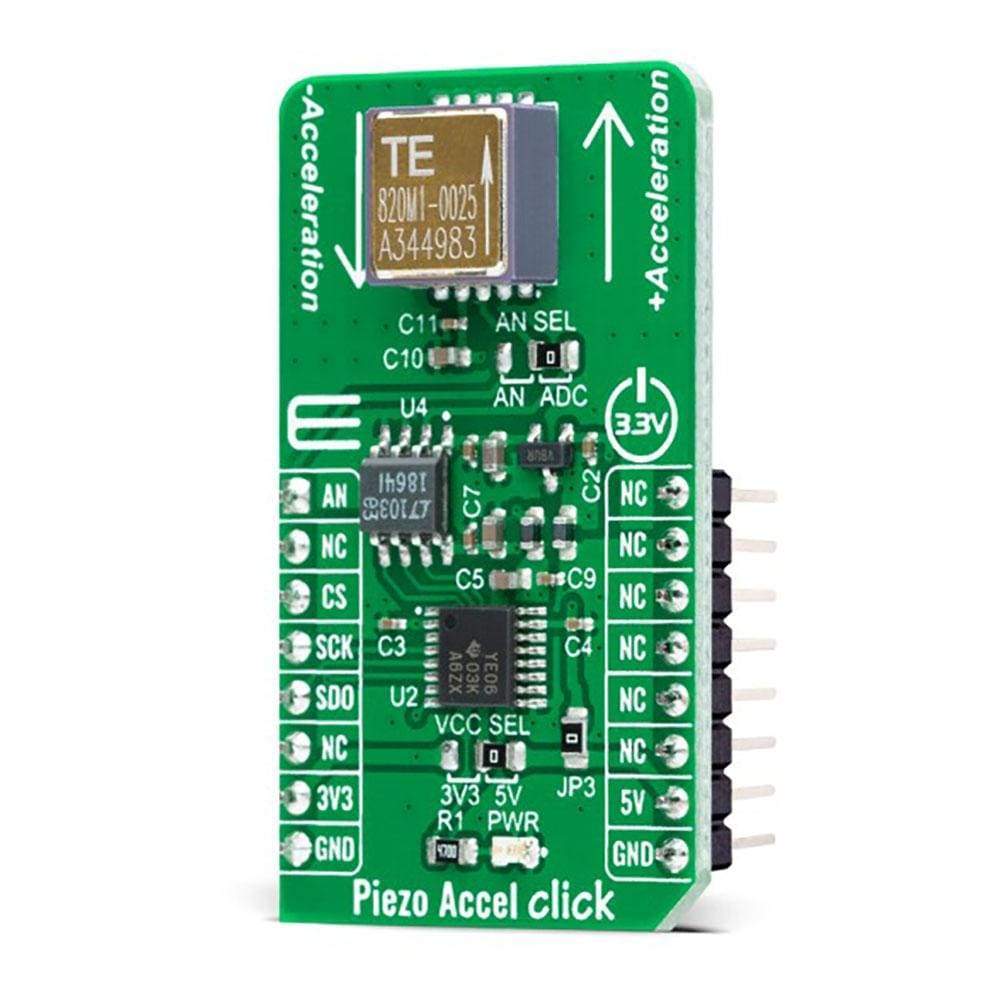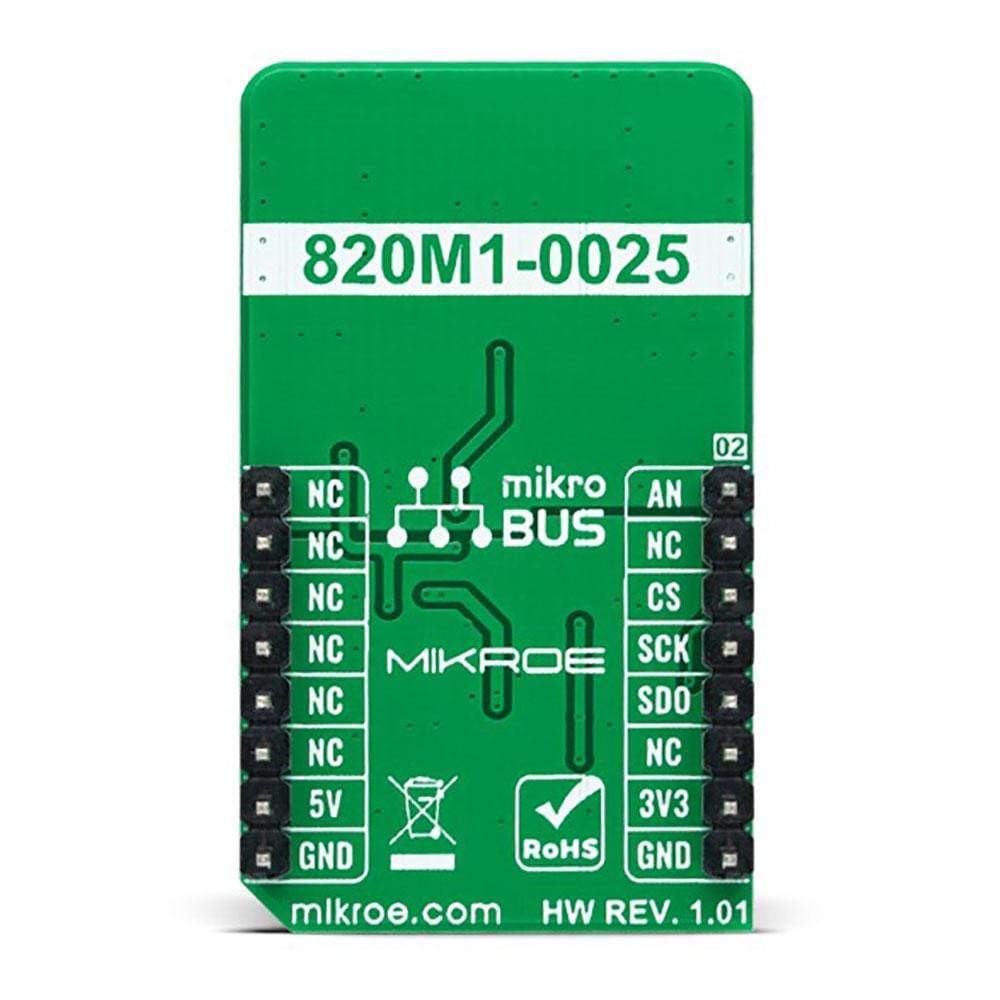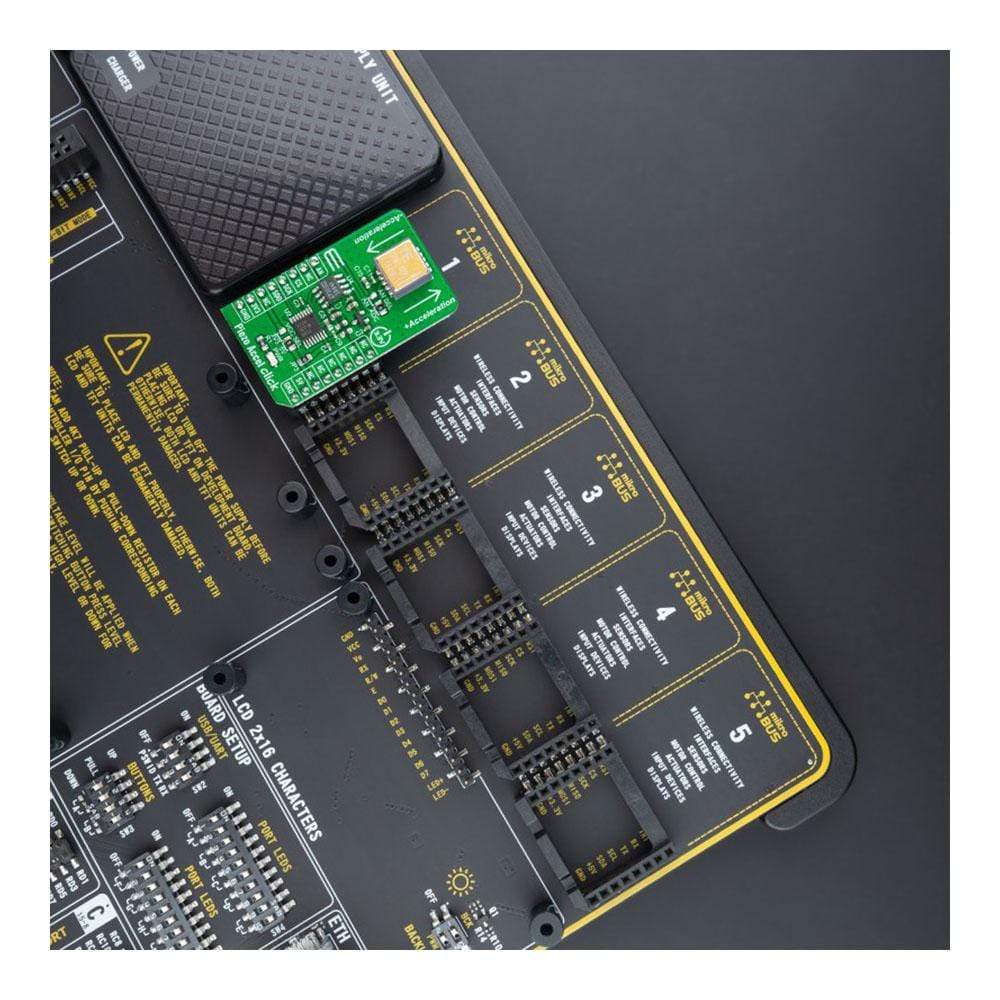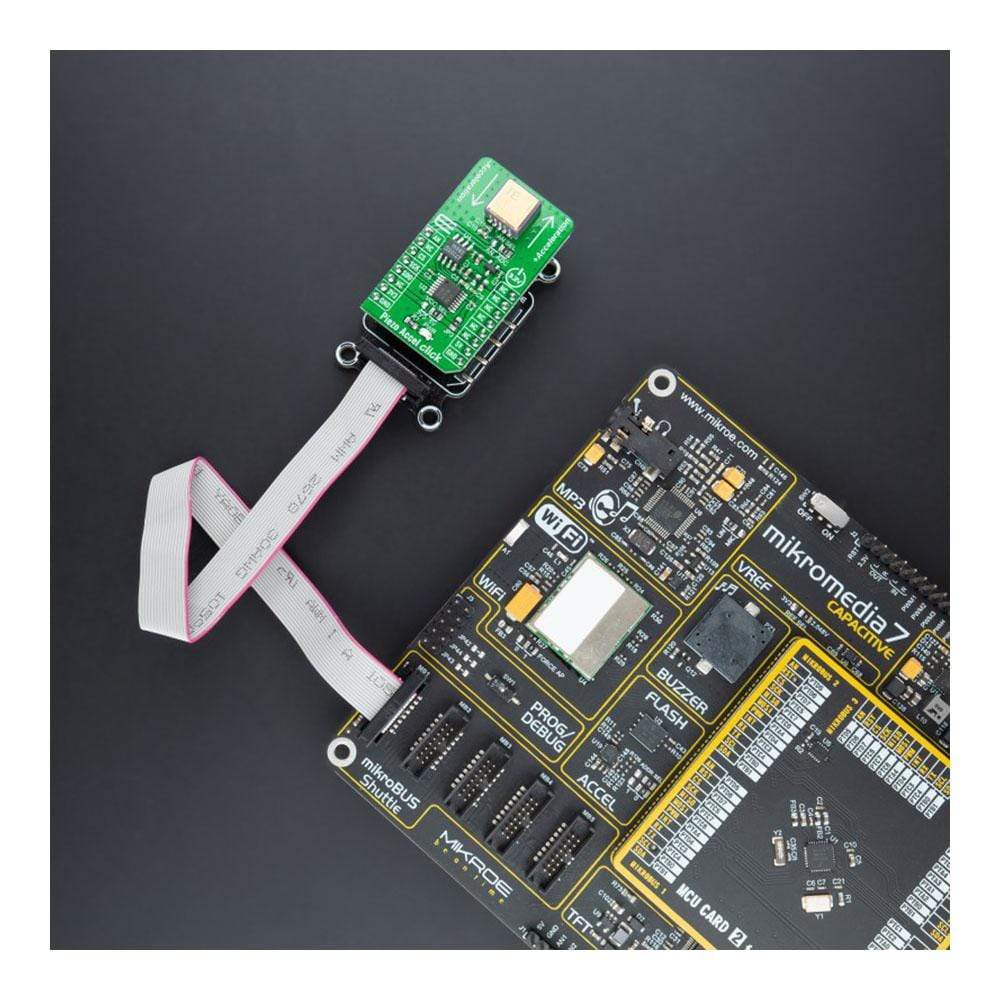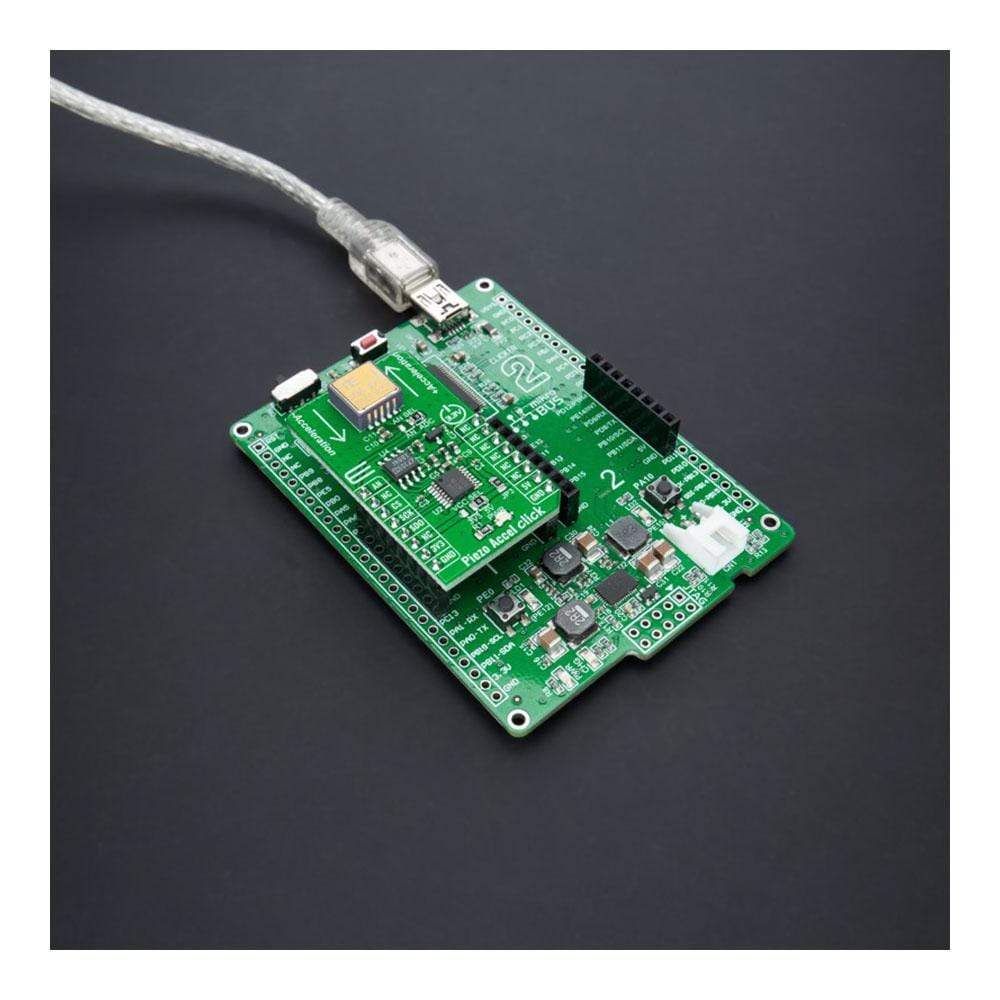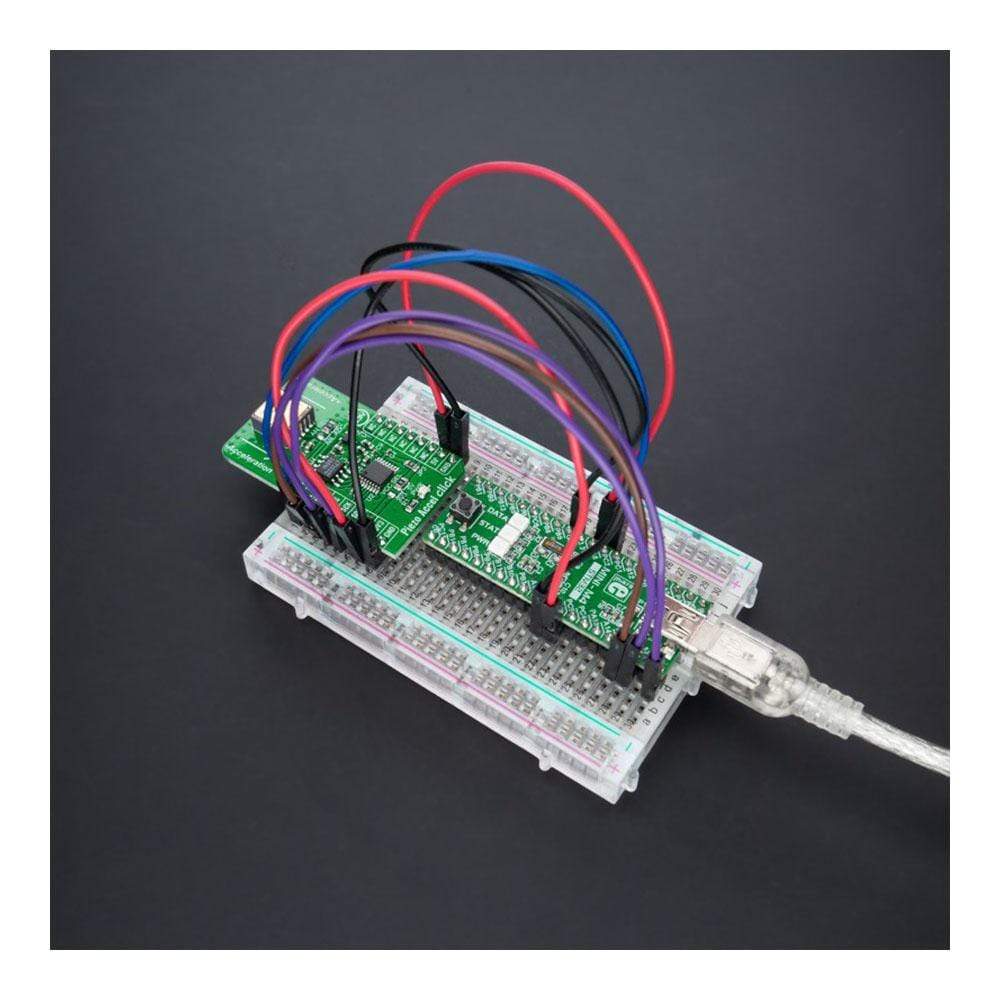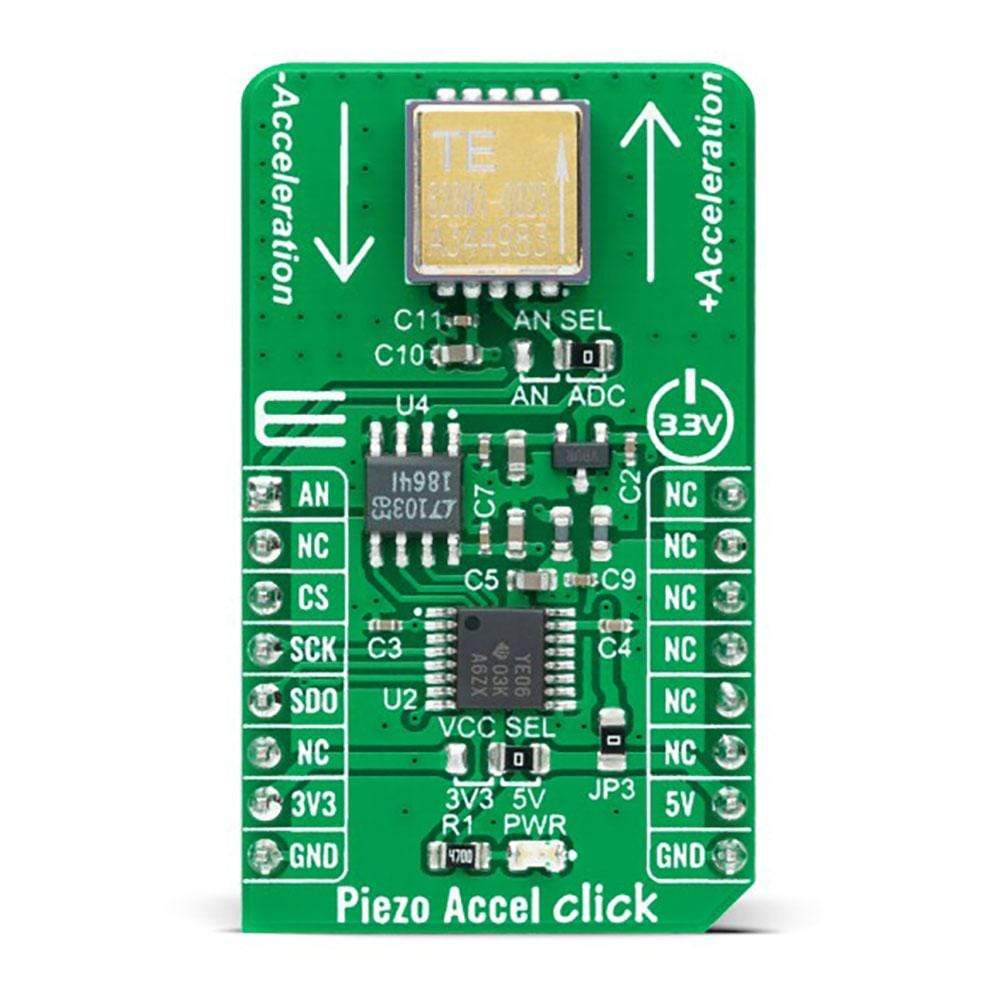
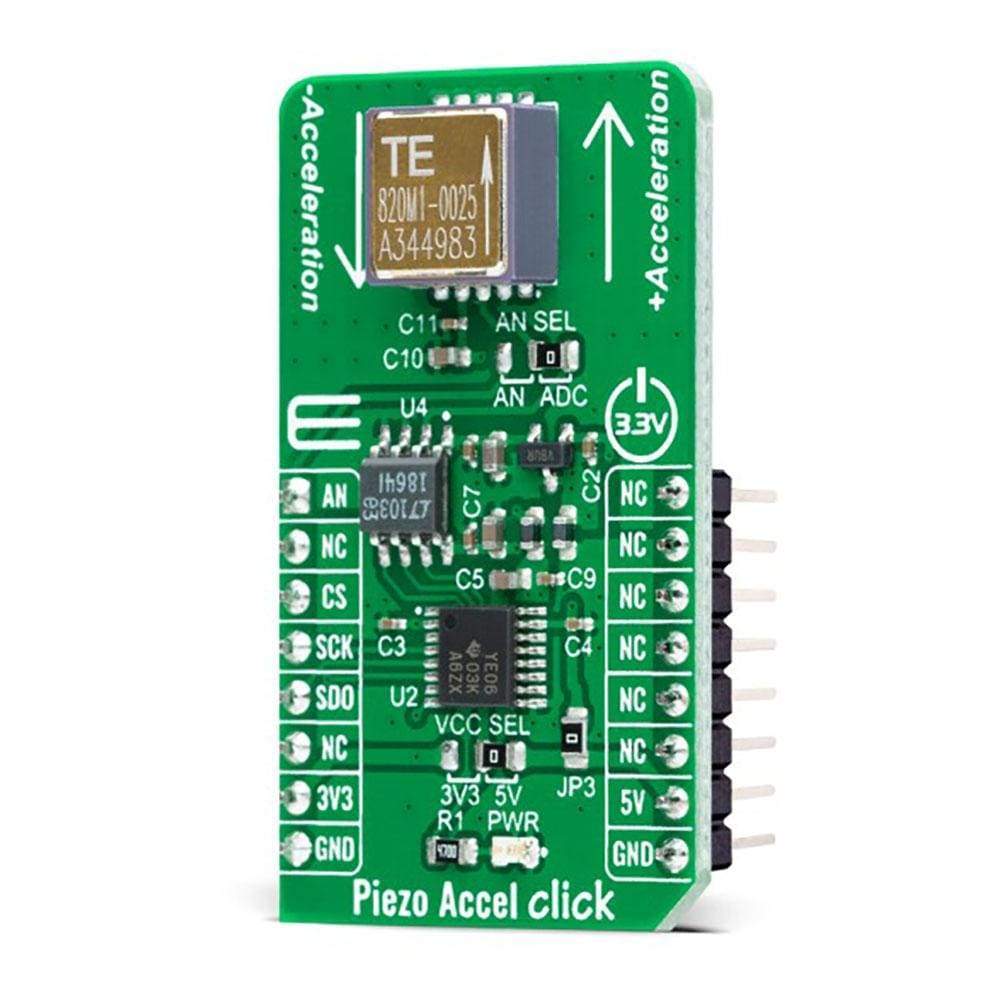
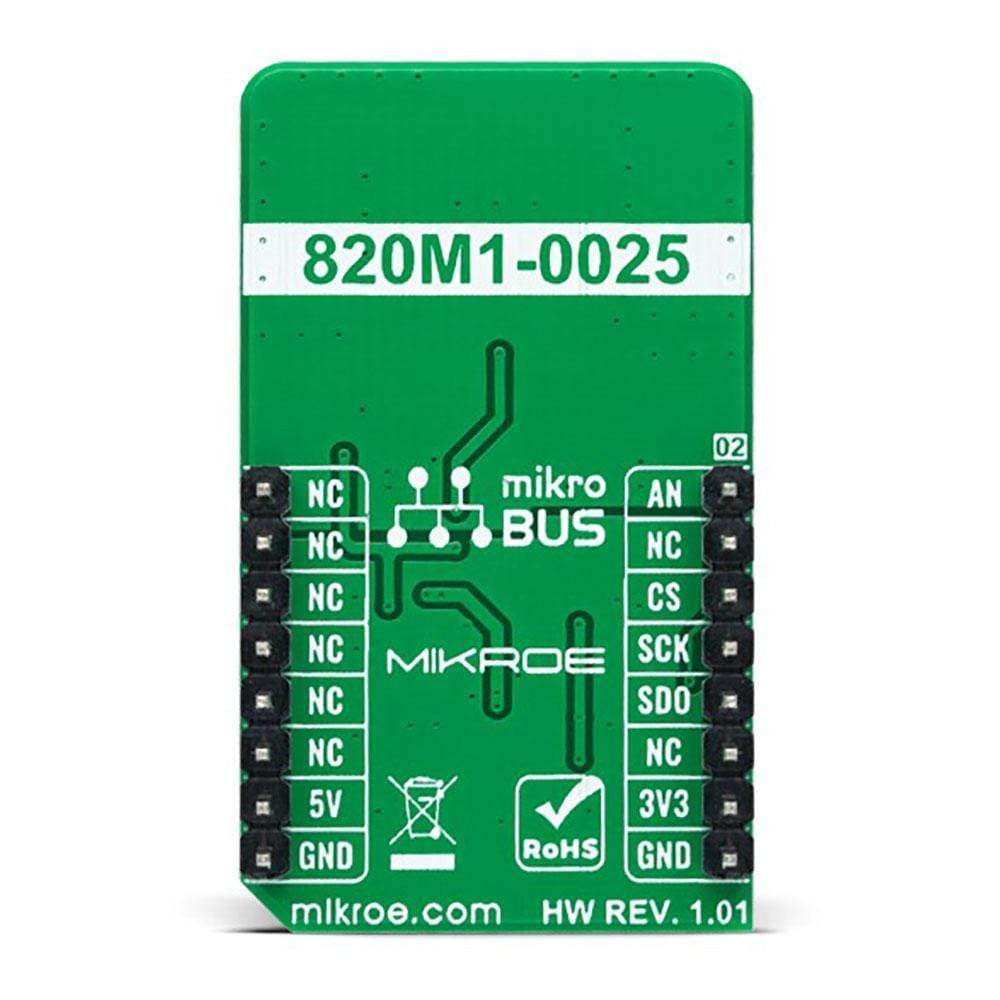
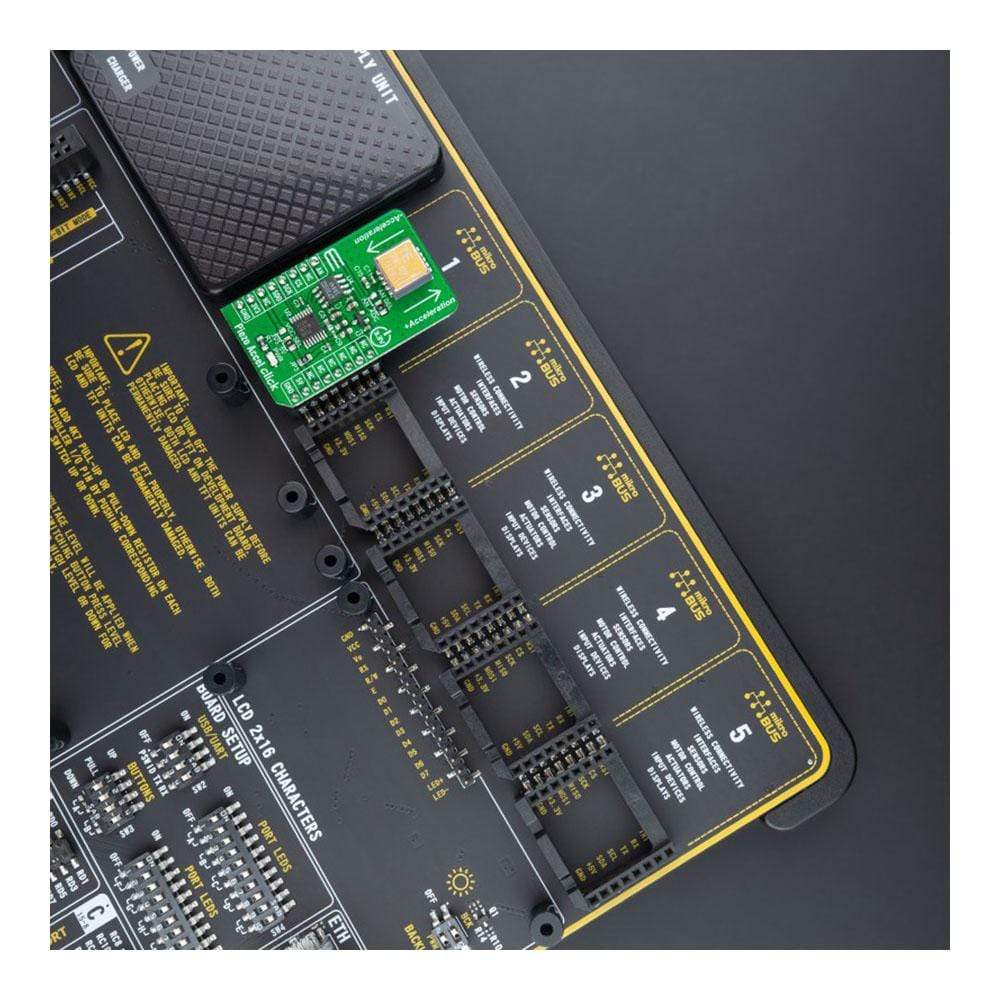
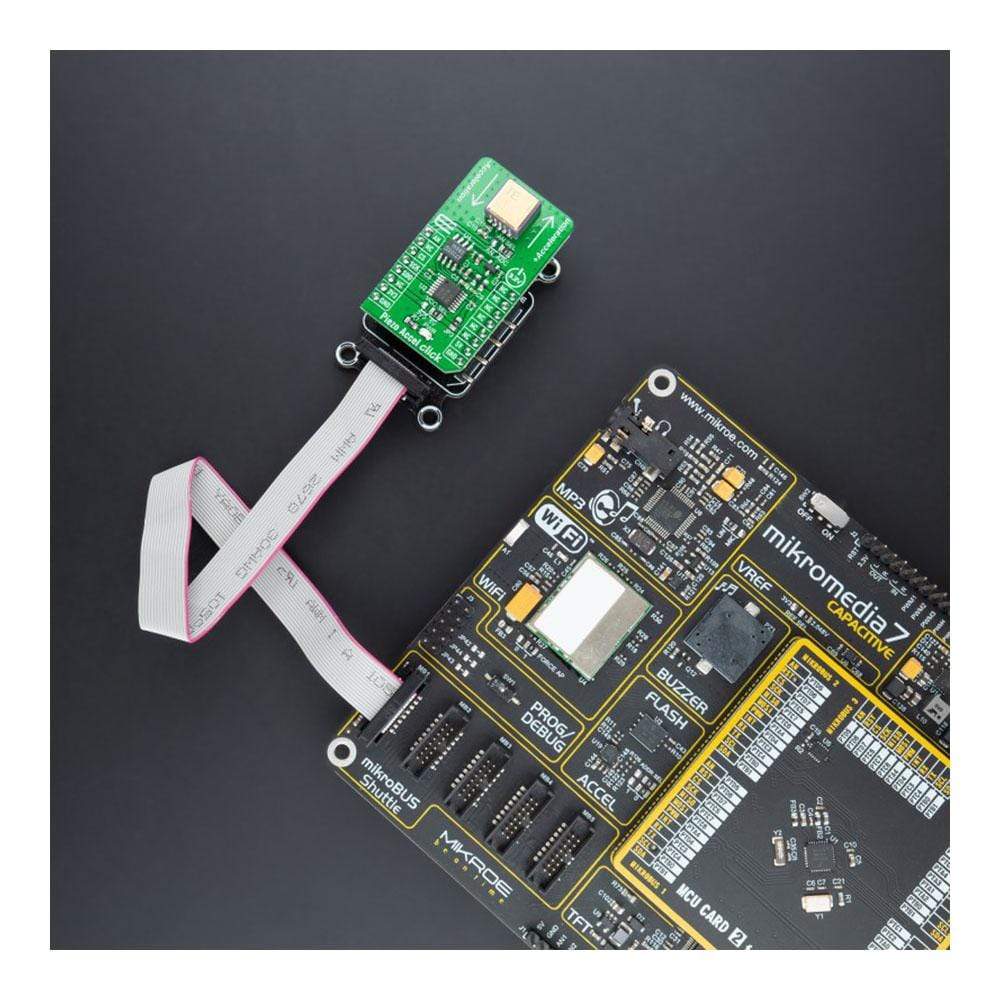
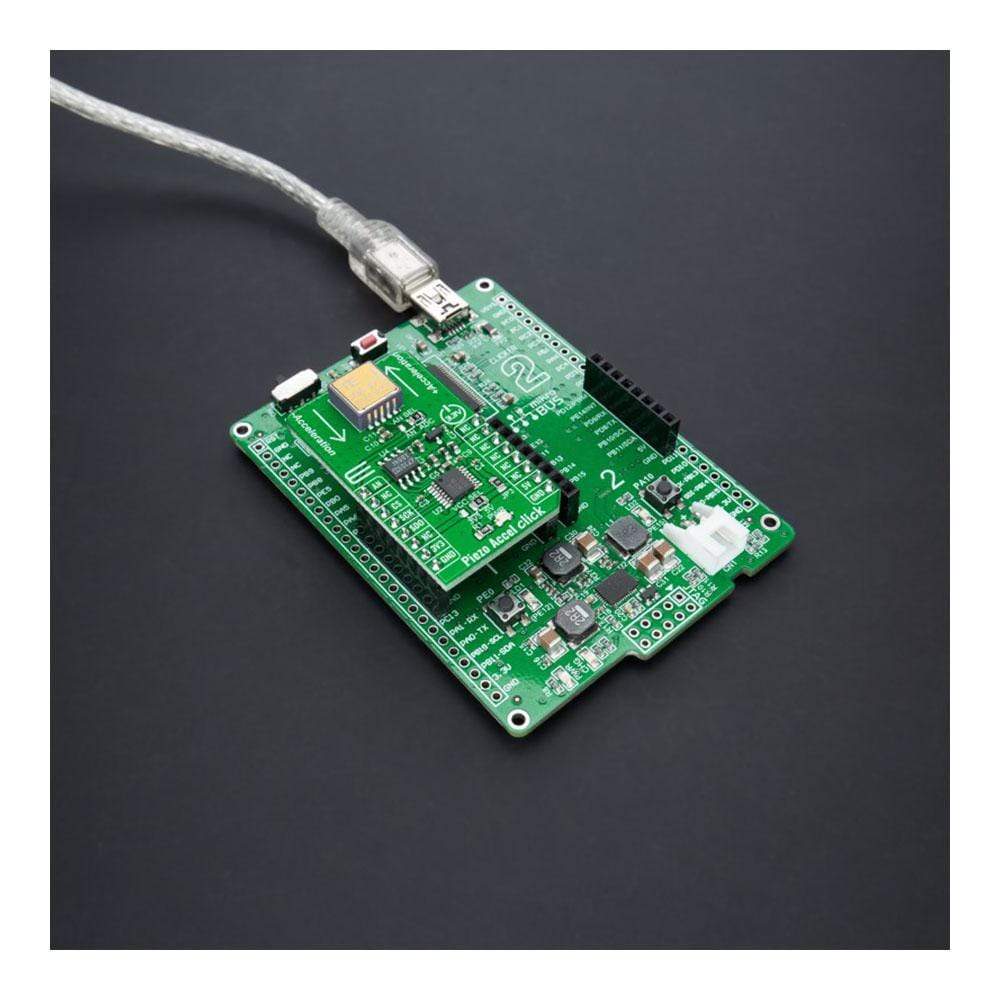
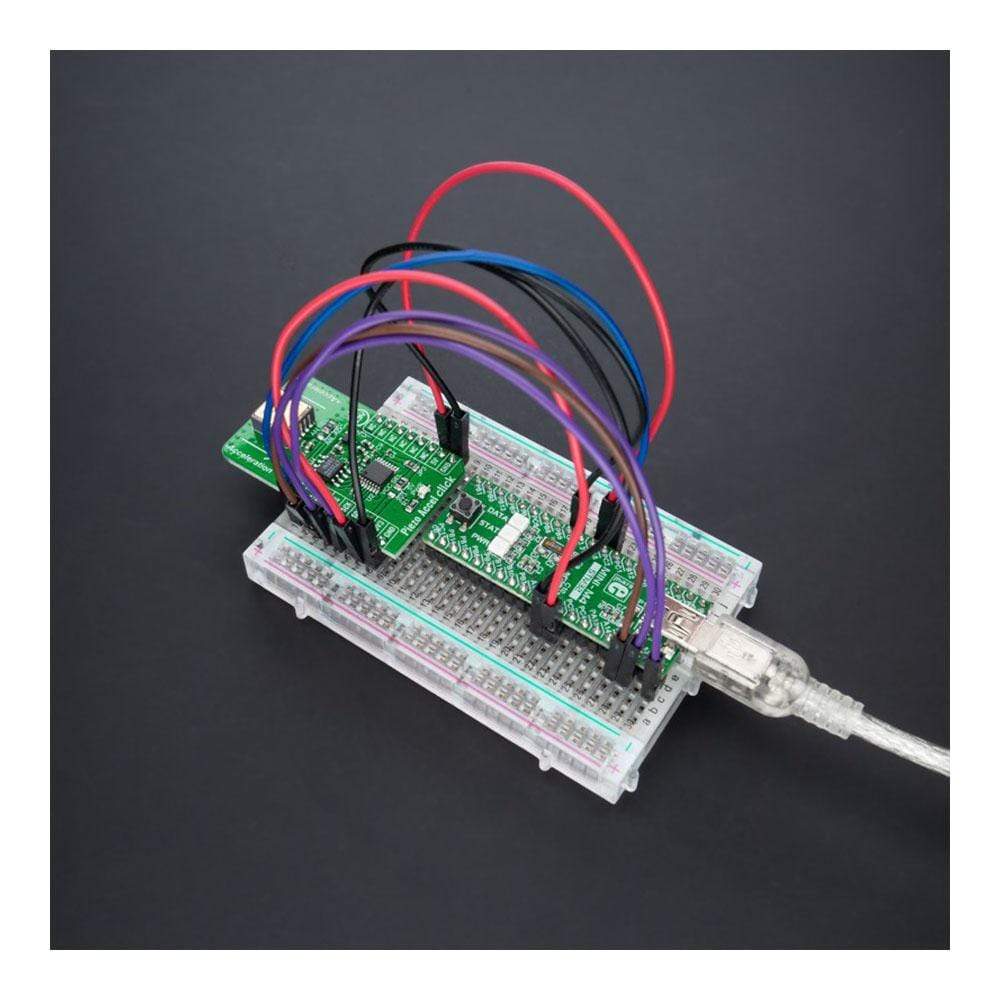
Overview
The Piezo Accel Click Board™ is a compact add-on board containing an acceleration sensor based on PE technology. This board features the 820M1-0025, a piezoelectric accelerometer designed for embedded condition monitoring and preventive maintenance applications from TE Connectivity. This accelerometer features a stable piezoceramic crystal sealed in a fully hermetic LCC package available in a range from ±25g with a flat frequency response up to 15kHz. The piezoelectric technology used by this accelerometer has a proven track record for offering the reliable and long-term stable output required for condition monitoring applications where this Click Board™ can be used.Downloads
Das Piezo Accel Click Board™ ist eine kompakte Zusatzplatine mit einem Beschleunigungssensor auf Basis der PE-Technologie. Diese Platine verfügt über den 820M1-0025, einen piezoelektrischen Beschleunigungsmesser für eingebettete Zustandsüberwachungs- und vorbeugende Wartungsanwendungen von TE Connectivity. Dieser Beschleunigungsmesser verfügt über einen stabilen piezokeramischen Kristall, der in einem vollständig hermetischen LCC-Gehäuse versiegelt ist und in einem Bereich von ±25 g mit einem flachen Frequenzgang bis zu 15 kHz erhältlich ist. Die von diesem Beschleunigungsmesser verwendete piezoelektrische Technologie hat sich bewährt und bietet die zuverlässige und langfristig stabile Ausgabe, die für Zustandsüberwachungsanwendungen erforderlich ist, in denen dieses Click Board™ verwendet werden kann.
| General Information | |
|---|---|
Part Number (SKU) |
MIKROE-4559
|
Manufacturer |
|
| Physical and Mechanical | |
Weight |
0.02 kg
|
| Other | |
Country of Origin |
|
HS Code Customs Tariff code
|
|
EAN |
8606027382178
|
Warranty |
|
Frequently Asked Questions
Have a Question?
Be the first to ask a question about this.

